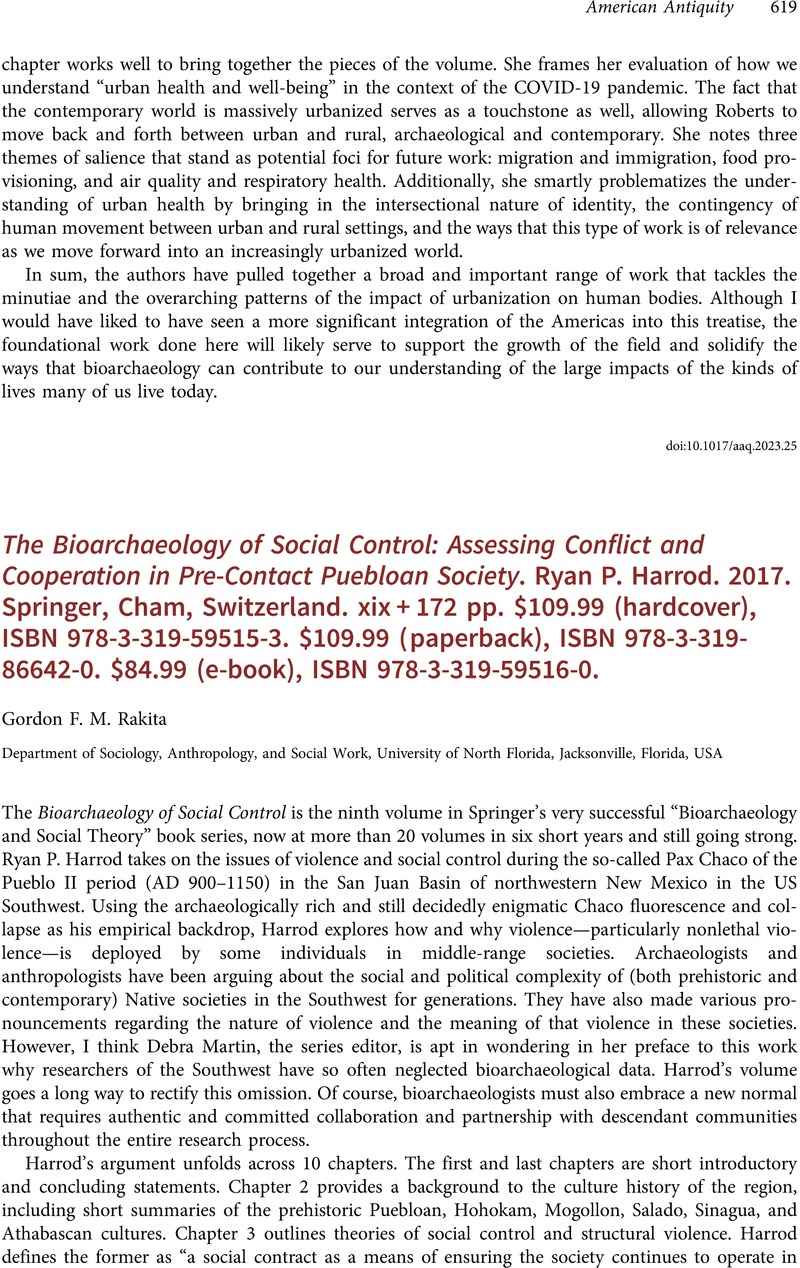No CrossRef data available.
Article contents
The Bioarchaeology of Social Control: Assessing Conflict and Cooperation in Pre-Contact Puebloan Society. Ryan P. Harrod. 2017. Springer, Cham, Switzerland. xix + 172 pp. $109.99 (hardcover), ISBN 978-3-319-59515-3. $109.99 (paperback), ISBN 978-3-319-86642-0. $84.99 (e-book), ISBN 978-3-319-59516-0.
Review products
The Bioarchaeology of Social Control: Assessing Conflict and Cooperation in Pre-Contact Puebloan Society. Ryan P. Harrod. 2017. Springer, Cham, Switzerland. xix + 172 pp. $109.99 (hardcover), ISBN 978-3-319-59515-3. $109.99 (paperback), ISBN 978-3-319-86642-0. $84.99 (e-book), ISBN 978-3-319-59516-0.
Published online by Cambridge University Press: 30 March 2023
Abstract
An abstract is not available for this content so a preview has been provided. Please use the Get access link above for information on how to access this content.

- Type
- Review
- Information
- Copyright
- Copyright © The Author(s), 2023. Published by Cambridge University Press on behalf of the Society for American Archaeology


